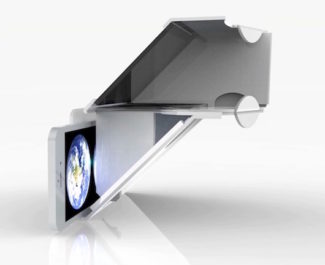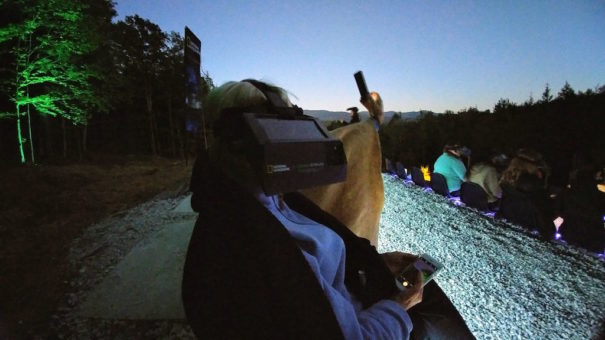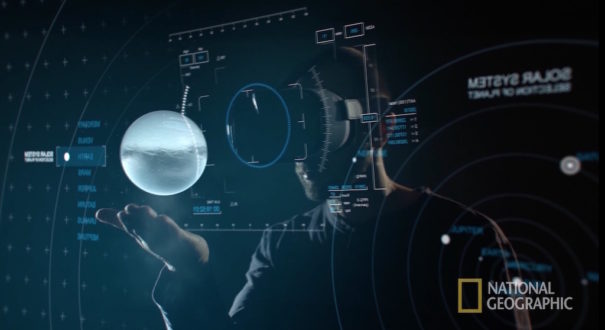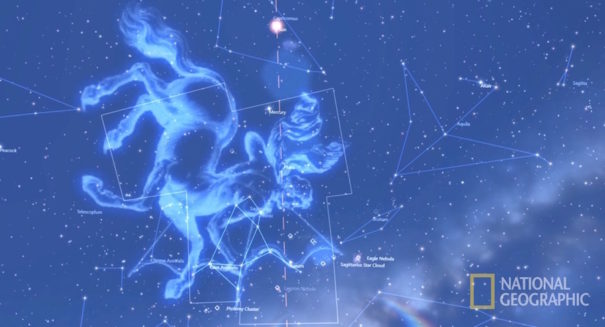ObservÉtoiles, el primer planetario de realidad aumentada al aire libre de National Geographic
Este innovador concepto de astronomía y entretenimiento es fruto de la colaboración entre National Geographic, en asociación con Aryzon, encargada del diseño del casco de realidad aumentada, y Escapist Games, creador de la aplicación.
Ubicada en la región canadiense Glen Sutton, en los cantones del Este de Quebec, Au Diable Vert Station es una base al aire libre, a más de 300 metros de altura y sin contaminación lumínica, que ahora cuenta con el primer planetario de realidad aumentada exterior, denominado ObservÉtoiles, created by National Geographic, en asociación con los especialistas en esta tecnología Aryzon y Escapist Games.
Specifically, la holandesa Aryzon se ha encargado de crear y diseñar el casco de realidad aumentada que deben ponerse los visitantes, mientras que la británica Escapist Games se ha ocupado de desarrollar la función con esta tecnología adaptada a la astronomía.
Desde su inauguración el pasado mes de junio, ObservÉtoiles ya ha logrado convertirse en una de las mayores atracciones turísticas de Canadá. Este singular planetario cuenta con un anfiteatro al aire, construido en la ladera de la montaña, with capacity to 180 asientos con calefacción, donde los visitantes se colocan unos cascos de realidad aumentada para ver la bóveda celeste, las constelaciones,… diseñado por Jeremy Fontana, copropietario en la estacion Au Diable Vert.
El objetivo de este planetario, como explica Fontana, era dar respuesta a todas las personas que visitaban la estación y, al ver un cielo estrellado, sin contaminación lumínica ni ruido, querían conocer lo que veían en ese momento; con un concepto innovador a través de la realidad aumentada.
Therefore, cada una de las proyecciones está narrada por un guía, encargado de compartir los contenidos, que han sido específicamente diseñados para ObservÉtoiles por Andrew Fazekas, especialista en astronomía y columnista de National Geographic.
 “Me ocupo del aspecto educativo y científico -señala Fazekas-, y National Geographic proporciona su gran capilaridad y su marca internacional. Estar al aire libre bajo un cielo muy oscuro, lleno de innumerables estrellas es una experiencia que te hace ser muy humilde, y tener esta tecnología realmente ayuda a desentrañar algunos de los misterios del cielo nocturno. No se parece a nada más que exista ahora”.
“Me ocupo del aspecto educativo y científico -señala Fazekas-, y National Geographic proporciona su gran capilaridad y su marca internacional. Estar al aire libre bajo un cielo muy oscuro, lleno de innumerables estrellas es una experiencia que te hace ser muy humilde, y tener esta tecnología realmente ayuda a desentrañar algunos de los misterios del cielo nocturno. No se parece a nada más que exista ahora”.
The show, de noventa minutos de duración y en el que Jeremy Fontana, Andrew Fazekas y National Geographic han trabajado durante casi dos años, comienza con un viaje virtual a través del sistema solar, seguido de una exploración del cielo nocturno sobre el anfiteatro. Gracias a un casco de realidad aumentada el público puede visualizar ilustraciones de estrellas y constelaciones superpuestas en el cielo.
“Al girar la cabeza con el casco, las constelaciones aparecen y desaparecen, pero se superponen a las estrellas reales -explica Jeremy Fontana-. Esta es realmente la esencia de la realidad aumentada, tienes ambas cosas sucediendo al mismo tiempo. Se puede ver el cielo y las estrellas reales, pero el hecho de que superpongamos las imágenes de las constelaciones a través de la realidad aumentada y contemos las historias es el secreto”.
Besides, este singular planetario también se ha beneficiado de la reciente designación por parte de la Real Sociedad Astronómica de Canadá como ‘reserva del cielo oscuro’, la segunda de este tipo en Quebec, después del observatorio del Mont Mégantic, “lo que hace posible que se vean muchísimas más estrellas que en áreas con alta contaminación lumínica”, afirma Fazekas.
Todos los implicados en este proyecto quieren replicarlo en otros países, con el objetivo de despertar la curiosidad de los jóvenes, “de la próxima generación de astrónomos, astronautas, matemáticos e ingenieros -recalca Fazekas-. La idea es simplemente hacer que el cielo sea inspirador e impresionante para la gente, al mismo tiempo que los hace felices, uniendo educación y entretenimiento”
Una vez terminado el espectáculo, la experiencia de ObservÉtoiles continúa en casa, ya que los adultos se van con un casco de realidad aumentada y un código para descargar la aplicación y seguir conociendo las estrellas y constelaciones.
You liked this article?
Subscribe to us RSS feed And you won't miss anything.

















